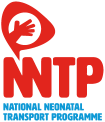CATEGORIES OF NEONATAL CARE (BAPM 2011)
The categories of Neonatal Care have been revised by the NNTP in accordance with those issued by the BAPM in August 2011. Please refer to these categories when defining the level of care required by an individual infant for transport and when completing the NNTP’s National Neonatal Daily Activity Census census.
These categories reflect the care a baby receives on any part of the day in question irrespective of whether or not the hospital aims normally to provide care at that level.
Babies requiring transport inevitably need at least 1:1 nursing and will often need medical support. Transport activity should be recorded separately and has been excluded from the ‘Categories’.
INTENSIVE CARE
General Principle
This is care provided for babies who are the most unwell or unstable and have the greatest needs in relation to staff skills and staff to patient ratios. (See 'Staffing Levels' below).
Definition of Intensive Care Day
- Any day where a baby receives any form of mechanical respiratory support via a tracheal tube
- BOTH non-invasive ventilation (e.g. nasal CPAP, SIPAP, BIPAP, vapotherm) and parenteral nutrition (PN)
- Day of surgery (including laser therapy for ROP)
- Day of death
- Any day receiving any of the following:
- Presence of an umbilical arterial line
- Presence of an umbilical venous line
- Presence of a peripheral arterial line
- Insulin infusion
- Presence of a chest drain
- Exchange transfusion
- Therapeutic hypothermia
- Prostaglandin infusion
- Presence of replogle tube
- Presence of epidural catheter
- Presence of silo for gastroschisis
- Presence of external ventricular drain
- Dialysis (any type)
HIGH DEPENDENCY CARE
General Principle
This is care provided for babies who require highly skilled staff but where the ratio of nurse to patient is less than intensive care (See 'Staffing Levels' below).
Definition of High Dependeny Care Day
Any day where a baby does not fulfill the criteria for intensive care where any of the following apply:
- Any day where a baby receives any form of non invasive respiratory support (e.g. nasal CPAP, SIPAP, BIPAP,
HHFNC) - Any day receiving any of the following:
- parenteral nutrition
- continuous infusion of drugs (except prostaglandin &/or insulin)
- presence of a central venous or long line (PICC)
- presence of a tracheostomy
- presence of a urethral or suprapubic catheter
- presence of trans-anastomotic tube following oesophageal atresia repair
- presence of NP airway/nasal stent
- observation of seizures / CF monitoring
- barrier nursing
- ventricular tap
SPECIAL CARE
General Principle
Special care is provided for babies who require additional care delivered by the neonatal service but do not
require either Intensive or High Dependency care..(See 'Staffing Levels' below).
Definition of Special Care Day
Any day where a baby does not fulfil the criteria for intensive or high dependency care and requires any of the following:
- oxygen by nasal cannula
- feeding by nasogastric, jejunal tube or gastrostomy
- continuous physiological monitoring (excluding apnoea monitors only)
- care of a stoma
- presence of IV cannula
- baby receiving phototherapy
- special observation of physiological variables at least 4 hourly
NORMAL CARE
Is provided for babies who themselves have no medical indication to be in hospital.
BAPM STAFFING LEVEL RECOMMENDATIONS
The following recommendations are thoses of the British Association of Perinatal Mediciane (2010) and are based on the numbers of nursing staff that should be available on each shift. Variations in the time available to each baby may occur during, for example, nursing staff breaks or over the acute period of admission of a baby. It is also recognised that in all care categories the ratio of nurse to baby (ies) may need to increase for some periods of time.
i) Intensive Care:
Due to the complex needs of both the baby and their family the ratio of neonatal nurses QIS to baby should be 1 nurse: 1 baby. This nurse should have no other managerial responsibilities during the time of clinical care but may be involved in the support of a less experienced nurse working alongside her in caring for the same baby.
ii) High Dependency Care:
The ratio of neonatal nurses QIS responsible for the care of babies requiring high dependency care should be 1 nurse: 2 babies. The more stable and less dependent babies may be cared for by registered nurses not QIS, but who are under the direct supervision and responsibility of a neonatal nurse QIS.
iii) Special Care:
The ratio of nurses looking after special care babies should be at least 1 nurse: 4 babies. It is essential that staffing in special care is sufficient to ensure that discharge is properly planned and organised including the adequate support for parents. Registered nurses and non-registered clinical staff may care for these babies under the direct supervision and responsibility of a neonatal nurse QIS.
References:
British Association of Perinatal Medicine (August 2011) Categories of Care 2011.p.3-4. Available at: http://www.bapm.org/publications/index.php#guidelines.
British Association of Perinatal Medicine (August 2010) Service Standards for Hospitals Providing Neonatal Care (3rd edition).p.8.Available at: http://www.bapm.org/publications/documents/guidelines/BAPM_Standards_Final_Aug2010.pdf




